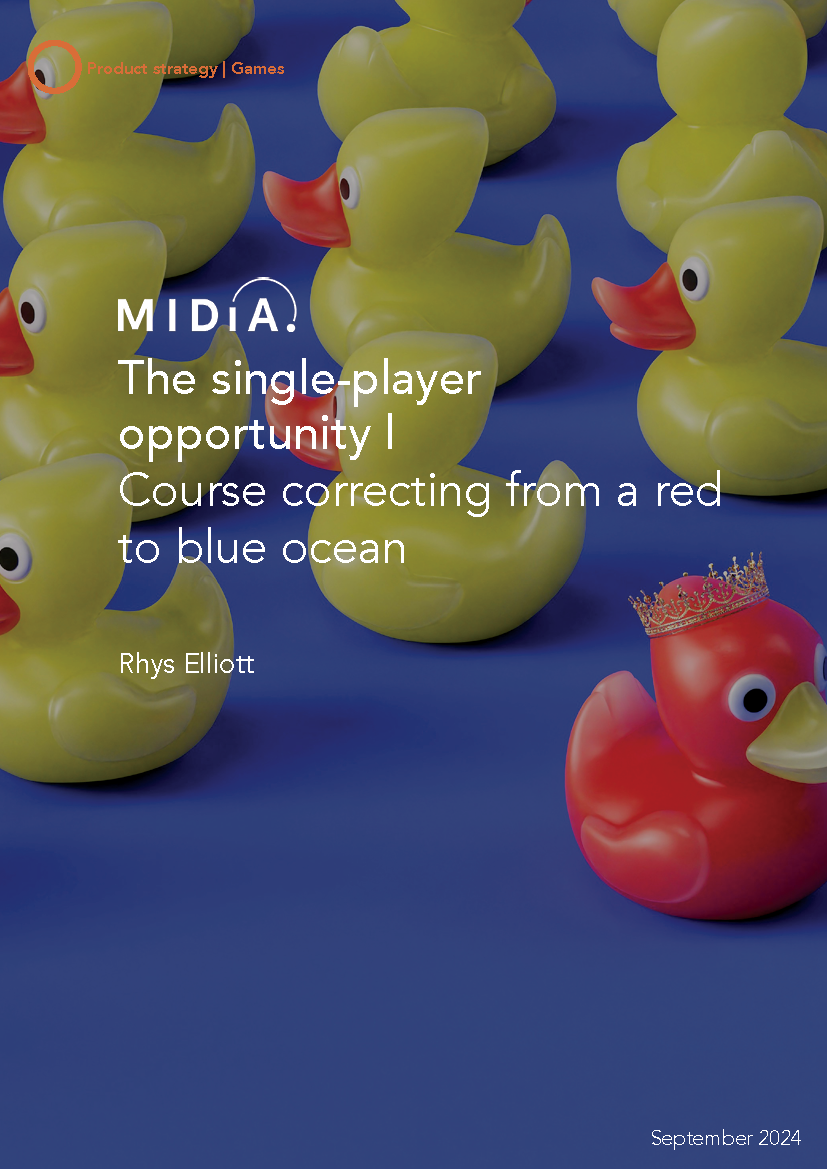The single-player opportunity Course correcting from a red to blue ocean

Get full access to this report and assets
If you are interested this report, or related reports such as Golden years, golden opportunity Older gamers are a key growth opportunity in a challenging games market, Bigger is not always better Premium gaming’s AA opportunity and High tide raises all ships Leveraging the cultural tidal wave of Grand Theft Auto VI get in touch today to enquire about a report bundle.
The AAA PC and console games market is facing growth issues, money is more expensive, and developers are facing pressure to become leaner, more profitable, and take fewer risks. Many game makers, including those that found initial success in single player, have been chasing the live-service trend. Yet, the likes of Fortnite and Roblox have mostly won that zero-sum game. The live-service market is now oversaturated, and the list of casualties is growing – especially among those formerly single-player-first developers.
There is a way forward: returning to what has always worked, single-player games. They are less risky, often less costly, and are still the preferred method of play for most gamers. And they do not have to cost hundreds of millions of dollars to resonate with players. Downsized (or rightsized) single-player games are making a comeback. Many publishers are again looking to single-player games – not live-service ones – to achieve their growth and efficiency goals. This report dives into the share of players who are interested in single-player games, what they are looking for in new games, and where the opportunities and pitfalls lie.
Key data and insights in this report:
- Gameplay preferences (PVE, couch co-op, online PVP, and single player) by age penetration
- Single-player gamers’ motivators for trying new games
- Preferred game themes for puzzle, action-adventure, sports, shooter, and RPG fans
- Other implications for making a single-player game in 2024 and beyond
Survey data is from MIDiA Research Consumer Survey Q2 2024 and Q2 2023, fielded in US, UK, Australia, Canada, Germany, France, Sweden, South Korea, and Brazil.
Table of contents:
Words: 4109
Pages: 17
Infographics: 3
Companies and brands mentioned: Apex Legends, Apple Arcade, Arkane Studios, Avengers, Babylon’s Fall, Baldur’s Gate 3, Batman Arkham, BioWare, Black Myth Wukong, Bully, Call of Duty, Candy Crush, Chained Together, Clash of Clans, Concord, Counter-Strike, Crystal Dynamics, Cyberpunk 2077, DC, Destiny, Diablo IV, EA, Elden Ring, Epic Games, Final Fantasy VII Rebirth, Fortnite, Game Science, gamescom, GameSpot, Genshin Impact, Grand Theft Auto 6, Guardians of the Galaxy, Harry Potter, Harvest Moon, High on Life, Hogwarts Legacy, Horizon: Forbidden West, Hyenas, IGN, Insomniac Games, It Takes Two, Journey to the West, Mad Max (2015 game), Mario Kart, Mario Strikers: Battle League Football, Mario Tennis Aces, Marvel, Metacritic, Metal Gear Solid V: The Phantom Pain, Microsoft, miHoYo, Netflix, Nintendo, Pikmin 4, Platinum Games, PlayStation, PlayStation Plus, Rick & Morty, Riot Games, Roblox, Rocket League, Rockstar Games, Royal Match, Second Life, SEGA, Shift Up, Sonic Superstars,Spider-Man, Star Wars, Star Wars Jedi: Survivor, Stardew Valley, Steam, Stellar Blade, Summer Game Fest, Super Mario Odyssey, Super Mario Wonder, Suicide Squad: Kill the Justice League, Supercell, Thank Goodness You’re Here!, Tencent, The Game Awards, The Guardian, The Last of Us, The Legend of Zelda, TikTok, Twitch, Valorant, Xbox, Xbox Game Pass, and YouTube
